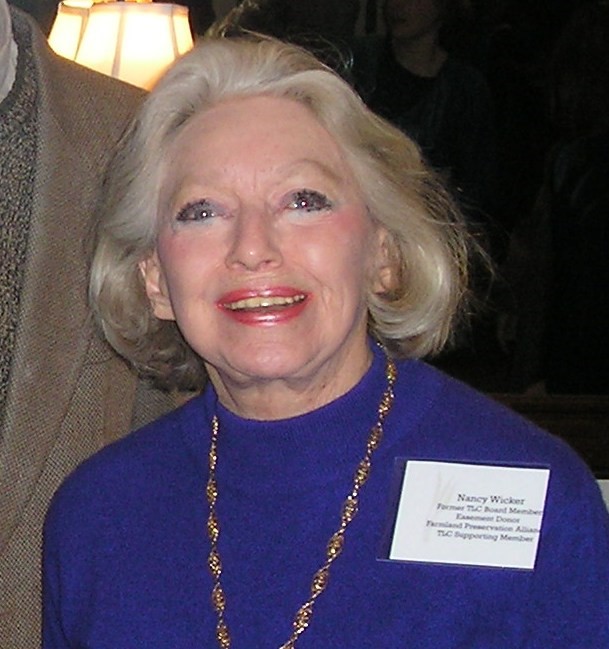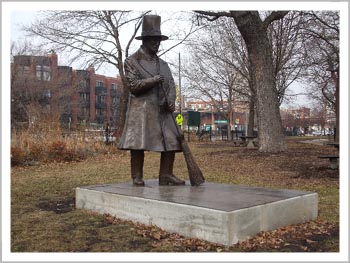Voices of the Land – Nancy Wicker’s Legacy
 Nancy Wicker has lived in five different countries and a Chicago neighborhood named after her family, but since 1999 she has chosen to live on fifteen acres in McHenry County. And she has never been happier.
Nancy Wicker has lived in five different countries and a Chicago neighborhood named after her family, but since 1999 she has chosen to live on fifteen acres in McHenry County. And she has never been happier.
“It’s a completely different life, and I much prefer it to the city overall,” Wicker said.
After an extended period of living outside Chicagoland, Wicker returned to Chicago in 1992 to live in the Wicker Park neighborhood, named after a land donation made by her great-grandfather in 1870. Today known as one of the city’s trendiest addresses, the area was still “up-and-coming” when she returned. Wicker related how, in 1993, she couldn’t get a taxi there from the Loop.
“The driver said, we just don’t go there,” Wicker said.
Over the next decade, the neighborhood saw massive reinvestment fueled by the faith of people like Wicker. A sculptor, Wicker also created a statue of her great-grandfather for the park, just returned to display June 8, 2011 after being severely vandalized in 2009.
But she also wanted a greener, more natural space than her namesake park. And so she moved to fifteen acres in Alden Township, east of Harvard, in 1999. Immediately, her thoughts turned to returning her property to a natural ecosystem and keeping it that way.
“When I first moved out, the question was what to do with the land, for conserving and restoring it,” Wicker said.
Wicker applied for and received a preservation grant. With help from The Land Conservancy of McHenry County and the McHenry County Conservation District, she cut, burned and planted her property, as well as dug a pond, until she had reconstructed a native environment: wildflowers, wetland savanna and, most promising, a pine forest being succeeded by an oak forest. She approached TLC to put her land under a conservation easement, but only ten acres at first. The five acres surrounding her home and other buildings were exempt.
Then, Wicker said, she had an epiphany. “I called up [TLC] and said, ‘I had a nightmare that somebody bought up the five acres and put up an apartment building,’” she remembers. Today, her entire property including her buildings is under easement.
Wicker’s buildings consist of her house and two barns, one of which dates back to 1890. Under the terms of the easement, no additional buildings may be built on the property. The barns have hosted a small menagerie of animals, including a Morgan horse Wicker adopted from the Hoofed Animal Humane Society and a friend’s horse, although both animals are now deceased. Wicker currently owns two pet goats, two dogs, and two cats, all of which are also rescues.
The barns also contribute to the natural environment because they house a large number of brown bats. “They are a great benefit,” she said, “[because] the barn is absolutely bug-free.” Other animals she’s spotted on her property include sandhill cranes, a nesting pair of mallard ducks, turkey, deer and raccoons.
“It’s a wonderful spot because it has a little bit of everything,” Wicker said of her property, “prairie and wetlands and a little bit of woods” as well as a vernal stream which appears only in the spring.
Wicker is happy with her property, but nervous about the future of an adjoining property called the Beckwith Woods. The Woods are 130 acres of old-growth forest formerly owned by a conservationist but which never made it into easement.
“We’re all desperately hoping to get the Beckwith Woods,” Wicker said. “[The pre-settlement trees there] are incredibly beautiful, it would be a crime to lose them.”
She is nervous about the site’s future because she doesn’t know the current owners, and believes the asking price on the land is $20,000 an acre. If that price is accurate, the heirs are sitting on $2.6 million worth of land, a very tempting opportunity that threatens the woodlands.
Wicker hopes that instead of more development, one day the Beckwith Woods will be a natural area combined with her own property. She wants the public to have access to the woods, to see the natural beauty of the area. “You can’t see the sky in those woods,” she said. “It’s breathtaking, extraordinary.”
“I would hope that people will be able to walk through it and learn things.”